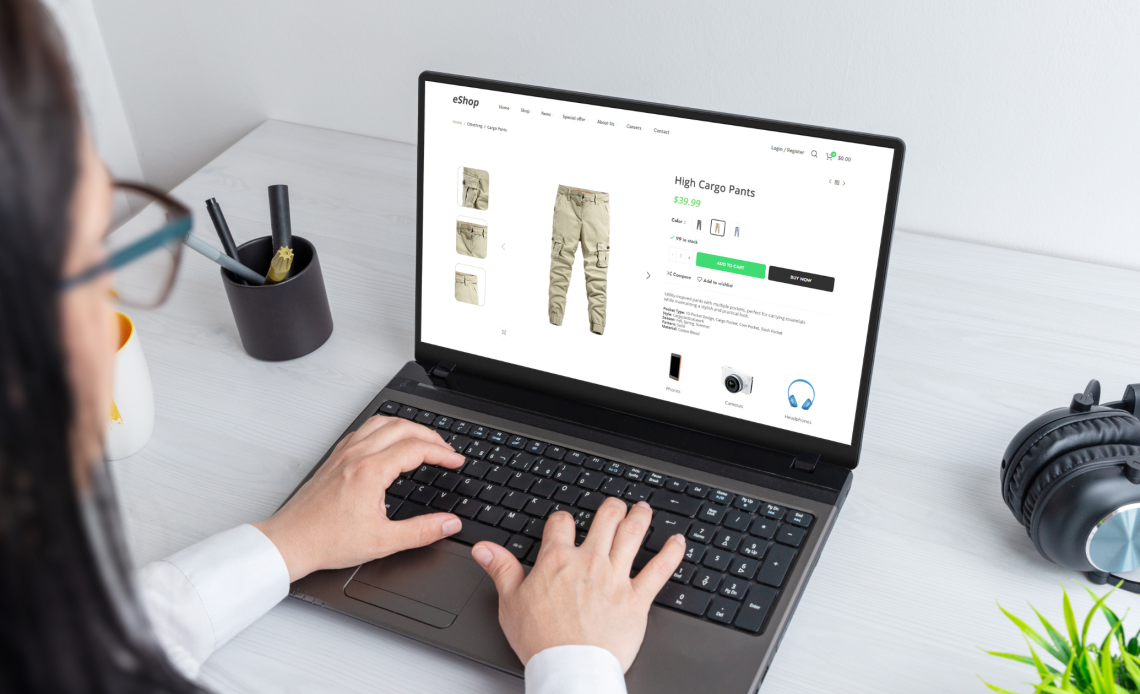
A website that stands out needs more than just eye-catching graphics as the competition for users’ attention heats up. The ability of a website to engage users and deliver a smooth, memorable experience is now critical to its success. The use of micro-interactions—tiny, imperceptible animations and interactive elements that may go unnoticed but have a significant impact on user engagement—is a successful tactic in accomplishing this. Micro-interactions, such as a loading animation, a soft button hover effect, or real-time feedback following form submission, can make a static webpage more dynamic and interesting. The importance of these seemingly insignificant details in improving user satisfaction and increasing conversion rates for e-commerce websites is examined in this article.
Recognizing Micro-Interactions: Web Design’s Unsung Heroes
A user’s brief, frequently subtle interactions with a design element are known as micro-interactions. Consider the subtle color change that occurs when you hover over a button on a phone or the tiny vibration that occurs when you receive a notification. These interactions have a specific function, like giving users feedback, motivating them to take action, or giving them visual cues to help them navigate a website.
These minor details are essential to the overall user experience because they are present throughout a website. Even though they may not seem like much, well-executed micro-interactions can humanize digital interfaces and make them more user-friendly and pleasurable. This has the potential to revolutionize customer satisfaction and engagement for web development firms and e-commerce companies.
The Significance of Micro-Interactions in Web Design
- Improved User Experience (UX)
One of the primary objectives of any website is to provide a satisfying user experience. Because they offer instant feedback, micro-interactions are essential to producing a flawless user experience. For instance, a user is reassured that their action was successful when they submit a form and see a brief animation confirming the submission. Users feel more confident about their actions as a result of the process being less uncertain and more enjoyable.
Users can also be guided through complicated procedures, such as completing a multi-step form or navigating an e-commerce checkout page, by interactive websites that include micro-interactions. Users are less likely to give up on tasks midway through if they are divided into manageable steps and given visual feedback.
- Boosting User Engagement
Ordinary interactions can be transformed into interesting experiences through micro-interactions. Take the like button on social media sites as a straightforward example. Users experience a brief moment of joy when they click the “like” button and see a heart animation, which motivates them to continue interacting with the content. This also holds for web design.
An e-commerce website might, for instance, employ micro-interactions to show a brief animation when a product is added to the cart or highlight products when users hover over them. Users are more inclined to explore the website further as a result of these small interactions, which contribute to a sense of playfulness and interaction. The chance of a conversion rises along with the amount of time spent on the website.
- Building Brand Personality
Additionally, micro-interactions are a great way to add personality to a brand’s website. Businesses can give consumers a more unified and memorable experience by carefully designing animations that capture the essence of their brand. While a brand aiming for a more playful audience might choose quirky, enjoyable animations, a web development company that specializes in cutting-edge technology might use sleek, futuristic animations to communicate its innovative approach.
With the help of these components, a website feels less like a generic template and more like a special place where people can interact. When it comes to e-commerce websites, this can help a brand stand out in a crowded market, resulting in repeat business and customer loyalty.
The Role of Micro-Interactions in Driving E-Commerce Conversions
- Reducing Cart Abandonment
Many users abandon their carts before making a purchase, which is a common problem for e-commerce websites. The checkout process can be streamlined through micro-interactions to help address this problem. For example, by giving users a sense of progress, a small progress bar that indicates where they are in the checkout process can motivate them to finish their purchase.
A more comforting experience can also be produced by providing animated visual feedback when users add products to their cart or enter payment details. By confirming that the user is proceeding correctly, these animations can ease their frustration and motivate them to finish the transaction.
- Improving Call-to-Action (CTA) Effectiveness
Whether a user is making a purchase, downloading a resource, or subscribing to a newsletter, call-to-action buttons are essential for increasing user conversions. An effective call to action (CTA) can determine whether a user takes action or just navigates off the page. By highlighting these buttons with visual cues, micro-interactions can increase the allure of CTAs.
For instance, a tiny animation or color shift can draw the user’s attention and convey a sense of urgency when they hover over a “Buy Now” button. Because the button feels more responsive and approachable due to the dynamic feedback, users are encouraged to click. Web development companies can assist e-commerce clients in raising their conversion rates by adding micro-interactions to calls to action.
- Highlighting Key Information
Strategic use of micro-interactions can draw attention to crucial information, like sales, promotions, or the introduction of new products. For example, a subtle animation may highlight a new product category or a promotional banner when a user lands on an e-commerce homepage. Directing users to the most pertinent sections of the website enhances their browsing experience and raises the likelihood that they will make a purchase.
Effectively navigating users through a website can make all the difference in the highly competitive world of e-commerce. Businesses can guarantee that users don’t miss out on the most valuable content by using micro-interactions to highlight important elements, which will ultimately increase conversion rates.
Best Practices for Implementing Micro-Interactions
- Keep It Subtle
Despite their potential power, micro-interactions should not be overdone. Excessive animations or ostentatious effects can overwhelm users and make the experience less enjoyable overall. Natural and intuitive micro-interactions that improve the user’s experience without drawing undue attention to themselves are the best.
- Align with User Intent
The context and intent of the user should always be reflected in successful micro-interactions. A loading spinner, for instance, can be helpful while a page loads, but it should vanish as soon as the content is prepared. In a similar vein, hover animations ought to only start when the user’s cursor is close to a particular element. This guarantees that small interactions enhance the experience rather than detract from it.
- Consistency Is Key
When adding micro-interactions to a website, consistency is essential. Maintaining a unified feel across the website by using a consistent style and animation speed makes the user experience more predictable and intuitive. By establishing style standards for animations and interactive components, a web development company can guarantee uniformity throughout the website.
Real-World Examples: Micro-Interactions Done Right
Using micro-interactions to increase engagement and conversions is a skill that some top e-commerce sites have perfected:
Amazon: Throughout the user journey, Amazon, one of the biggest e-commerce platforms, uses micro-interactions to provide feedback. For instance, a brief animation verifies the action when an item is added to the cart, and tooltips assist users with the checkout procedure.
Airbnb: This company is renowned for its slick user interface, which includes micro-interactions that facilitate finding and booking lodging. Users are kept interested and given a sense of control over their selections by subtle animations, such as highlighting a selected date or presenting dynamic search results.
Shopify Stores: Many Shopify-based e-commerce websites use hover animations to enhance the browsing experience. These animations, such as zooming in on product images or revealing additional information when hovering over a product card, add a layer of interactivity that keeps users interested.
Conclusion: The Power of Tiny Details in Web Design
The smallest details frequently have the greatest effects in the field of web development. Even though they are subtle, micro-interactions can improve a website’s user experience and produce important business outcomes. These small animations can turn a typical e-commerce website into an interactive one that connects with users and increases conversion rates by making websites more entertaining, easy to use, and engaging.
Adopting micro-interactions is now essential for companies hoping to remain competitive in the digital era. Web development firms have the chance to incorporate these features into their designs as more users demand smooth and captivating experiences, producing websites that not only look great but also function remarkably well. Therefore, don’t undervalue the significance of these minor details when creating a new website or redesigning an old one. They could be the secret to a website that is more interesting and easy to use.



